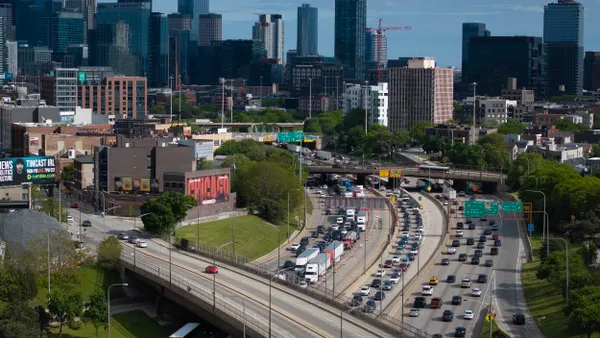Dive Brief:
- The National League of Cities (NLC) released a guide, Micromobility in Cities: A History and Policy Overview, to help leaders best integrate micromobility services — such as dockless bikes, e-bikes and e-scooters — into their communities.
- The guide goes over micromobility challenges and factors that cities should take into consideration such as public space overcrowding and users strewing dockless devices in public spaces. It also provides seven recommendations, including focusing on equity, developing a plan and agreement for trip data and learning from other cities' experiences.
- The guide notes that operators dropping into cities first and asking for permission later doesn't work, so the public and private sectors should collaborate from the start to create the best mobility policies.
Dive Insight:
The guide cites the National Association of City Transportation Officials' stat that last year, 84 million trips occurred on shared micromobility devices — e-scooters as well as docked and dockless bike-share. "The past year, in particular, has been marked by a race toward micromobility," the guide reads.
It highlights that recent years have brought shifts in citizens' preferences for alternative modes of transportation. For example, just a few years ago standard, docked bike-share was a hot topic, and then dockless bikes were the rage. But attention has shifted to e-scooters since their U.S. market introduction in 2017.
The rapid changes can make it difficult for some cities to keep up, considering the slower pace at which many governments operate and introduce policies or programs. The guide suggests that the changes should prompt city staff to ask questions about how cities are designed. Mobility plans should consider who is being served with a thoroughfare design and how to manage street and curb space.
Collaboration is a prominent concept in the guide. In addition to collaborating directly with private micromobility companies, it suggests that city staff and leaders collaborate with and learn from other cities. The guide provides half a dozen different cities' experiences with various micromobility forms. Researching other cities' successes and areas for improvement can help cities that are examining new micromobility programs conserve their resources and cater elements of other programs to their own community.












